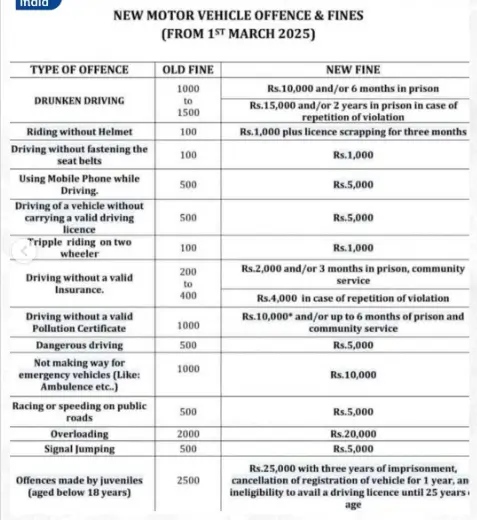Tata Nexon EV and Mahindra XUV400 EV
.webp)
5 Jul 2025
Written by: BikeCarHub Editorial Team
Published on: 3rd July 2025
Introduction
Going electric isn't a decision—it's a change of mind for a brighter tomorrow. Electric cars provide a greener, smarter, and more sustainable drive. Consider it: no noisy engine, no fumes, and no weekly trips to the petrol station. What you do get is smooth, quiet journeys and the added convenience of charging at home. EVs are cheaper to operate per kilometre, and with fewer components than petrol or diesel engines, there's much less to go wrong—so you save a fortune on maintenance as well.
Why Choose an EV?
Going electric isn't a decision—it's a change of mind for a brighter tomorrow. Electric cars provide a greener, smarter, and more sustainable drive. Consider it: no noisy engine, no fumes, and no weekly trips to the petrol station. What you do get is smooth, quiet journeys and the added convenience of charging at home. EVs are cheaper to operate per kilometre, and with fewer components than petrol or diesel engines, there's much less to go wrong—so you save a fortune on maintenance as well.
But the biggest win? You're doing your bit for the planet. EVs produce zero tailpipe emissions, helping reduce air pollution in our already-crowded cities. As India ramps up renewable energy, your EV becomes even cleaner. And let's be honest—there's something exciting about owning a vehicle that reflects innovation, responsibility, and modern living. In 2025, an EV isn't just better than a fuel car—it's the smart, responsible, and future-ready choice.
Powertrain & Performance
Tata Nexon EV
- Battery & Motor (Standard): 30 kWh lithium‑ion, single synchronous motor delivering ~127 PS and 215 Nm torque
- Nexon.ev Max variant: Ups power to 143 PS, same torque, with a 45 kWh pack
- 0-100 km/h: ~9.9 seconds
- Drive Modes: Drive & Sport, regenerative braking levels
Mahindra XUV400 EV
- Battery Pack: 34.5 kWh or 39.4 kWh LFP batteries
- Motor Output: Approx. 148 PS (110-110 kW) with 310 Nm torque
- Drive Modes: Fun, Fast, Fearless + regen modes for single-pedal driving
Range & Charging
Tata Nexon EV
- ARAI Range: 312 km (30 kWh); 489 km (45 kWh)
-
Charging Times:
- 15 A home plug: ~10.5-17.5 hrs
- Fast AC (7.2 kW): ~4-6.5 hrs
- DC fast (50 kW): ~40-60 min (0-80%)
Mahindra XUV400 EV
- ARAI Range: 375 km (34.5 kWh) / 456 km (39.4 kWh)
-
Charging Times:
- 3.3 kW: ~13.5 hrs
- 7.2 kW: ~6.5 hrs
- 50 kW DC: ~50 min (0-80%)
Dimensions & Usability
| Specification | Tata Nexon EV | Mahindra XUV400 EV |
|---|---|---|
| Length × Width × Height | 3993×1811×1606 mm | 4200×1821×1634 mm |
| Wheelbase | 2498 mm | 2600 mm |
| Ground Clearance | 205 mm | Not stated officially |
| Boot Volume | 350 L | 368-378 L |
| Seating | 5 adults | 5 adults |
Features & Tech
Tata Nexon EV
- 12.3" HD touchscreen + 10.25" digital cluster
- JBL 9-speaker system
- Sunroof, air purifier, ventilated seats
- Vehicle-to-Load (V2L) for gadgets
- Adventure+ versions include dual-tone paint, digital DRL, drive modes, 360° camera, ESP
Mahindra XUV400 EV
- 10.25" infotainment + 10.25" digital driver display
- Dual-zone climate, sunroof, wireless charging, push-button start
- Dual-cam dashcam
- Drive modes, regen adjust, electronic gear selector
Convenience Comparison
- Both offer advanced connectivity (Bluelink vs Blue Sense)
- XUV400's dual-cam dashcam is unique
- Nexon has V2L—useful in emergencies
Safety & Ratings
Tata Nexon EV
- 6 airbags, ESP, EBD, hill hold, TPMS, 360° camera
- 5★ Bharat NCAP (adult & child)
Mahindra XUV400 EV
- 6 airbags, ESP, TPMS, hill-hold, rear camera
- 5★ Bharat NCAP (adult & child)
Pricing & Variants
Tata Nexon EV
- Starts at ₹12.49 L (30 kWh)
- Nexon.ev Max (45 kWh) is higher—exact prices vary regionally
- Single variants with consistent features across packs
Mahindra XUV400 EV
- EC Pro (34.5 kWh): ₹15.49 L
- EL Pro (34.5 kWh DT): ₹16.74 L
- EL Pro DT (39.4 kWh): ₹17.69 L
Variant-Level Comparison at a Glance
| Feature | Nexon EV (~₹12.5 L-? L) | XUV400 EV (₹15.5-17.7 L) |
|---|---|---|
| Battery Options | 30 kWh / 45 kWh | 34.5 kWh / 39.4 kWh |
| Power / Torque | 127-143 PS, 215 Nm | 148 PS, 310 Nm |
| ARAI Range | 312 km / 489 km | 375 km / 456 km |
| Quality Sound System | JBL 9-speaker | -- |
| Dashcam | 360° available | Dual-cam standard |
| V2L Capability | ✔ Included | -- |
| Bharat NCAP Rating | 5★ adult & child | 5★ adult & child |
| Starting Price | ₹12.49 L | ₹15.49 L |
Real-World Driving & Ownership
Tata Nexon EV
Agile, compact, with fast charging and smart tech; V2L gives it edge for camping/disaster use.
Mahindra XUV400 EV
Spacious, quick off-the-line, smoother experience, impressive infotainment, pricier but range adds utility.
Final Verdict
- Choose Tata Nexon EV if you want affordability, V2L use, agile city driving, and proven safety with JBL comfort.
- Choose Mahindra XUV400 EV if range matters most—longer trips without stress, extra cabin space, dual-cam dash.
Both are compelling, but your choice comes down to budget vs range and your specific daily use case.
FAQs: Tata Nexon EV vs Mahindra XUV400 EV
BikeCarHub always recommends taking a test drive of both vehicles to feel the difference yourself before making a purchase.
Check other brands here
Royal Enfield Motors Click Here!
For Suzuki Motors Click Here!
Check other Vehicles on BikeCarHub
.webp)
.webp)






.webp)











































